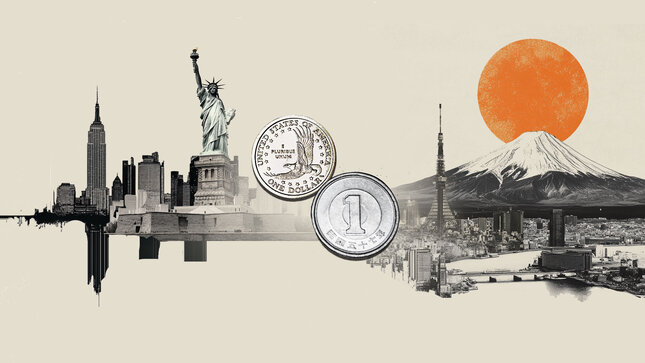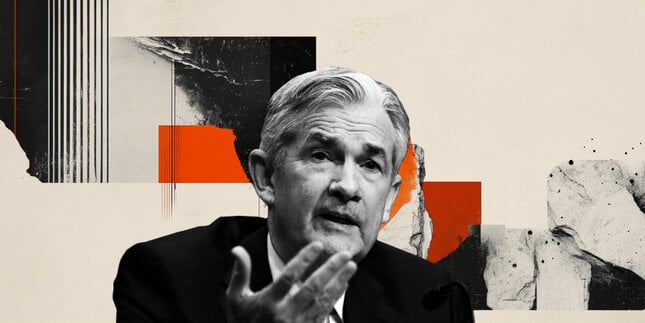The volume of wealth that changes hands in the currency market dwarfs that of all other financial markets. Specialist brokers, banks, central banks, corporations, portfolio managers, hedge funds and retail investors trade staggering volumes of currencies throughout the world on a continuous basis.
Because of the sheer size of transactions in the currency market, participants are exposed to currency risk. This is the financial risk that arises from potential changes in the exchange rate of one currency in relation to another. Adverse currency movements can often crush positive portfolio returns or diminish the returns of an otherwise prosperous international business venture. The currency swap market is one way to hedge that risk.
Currency swaps
A currency swap is a financial instrument that helps parties swap notional principals in different currencies and thus pay interest payments on the received currency. The purpose of currency swaps is to hedge against risk exposure associated with exchange rate fluctuations, ensure receipt of foreign monies, and to achieve better lending rates.
Currency swaps are comprised of two notional principals that are exchanged at the beginning and at the end of the agreement. Companies that have exposure to foreign markets can often hedge their risk with four specific types of currency swap forward contracts (Note that in the following examples, transaction costs have been omitted to simplify explaining payment structure):
-
Party A pays a fixed rate on one currency, Party B pays a fixed rate on another currency.
Consider a U.S. company (Party A) that is looking to open up a plant in Germany where its borrowing costs are higher in Europe than at home. Assuming a 0.6 Euro/USD exchange rate, the U.S. company needs 3 million euros to complete an expansion project in Germany. The company can borrow 3 million euros at 8% in Europe, or $5 million at 7% in the U.S. The company borrows the $5 million at 7%, and then enters into a swap to convert the dollar loan into euros. The counterparty of the swap may likely be a German company that requires $5 million in U.S. funds. Likewise, the German company will be able to attain a cheaper borrowing rate domestically than abroad – let's say that the Germans can borrow at 6% within from banks within the country's borders.
Let's take a look at the physical payments made using this swap agreement. At the outset of the contract, the German company gives the U.S. company the 3 million euros needed to fund the project, and in exchange for the 3 million euros, the U.S. company provides the German counterparty with $5 million.
Subsequently, every six months for the next three years (the length of the contract), the two parties will swap payments. The German bank pays the U.S. company the product of $5 million (the notional amount paid by the U.S. company to the German bank at initiation), 7% (the agreed upon fixed rate), and .5 (180 days / 360 days). This payment would amount to $175,000 ($5 million x 7% x .5). The U.S. company pays the German bank the product of 3 million euros (the notional amount paid by the German bank to the U.S. company at initiation), 6% (the agreed upon fixed rate), and .5 (180 days / 360 days). This payment would amount to 90,000 euros (3 million euros x 6% x .5).
The two parties would exchange these fixed two amounts every 6 months. 3 years after initiation of the contract, the two parties would exchange the notional principals. Accordingly, the U.S. company would pay the German company 3 million euros and the German company would pay the U.S. company $5 million.
-
Party A pays a fixed rate on one currency, Party B pays a floating rate on another currency.
Using the example above, the U.S. company (Party A) would still make fixed payments at 6.0% while the German bank (Party B) would pay a floating rate (based on a predetermined benchmark rate, such as LIBOR). These types of modifications to currency swap agreements are usually based on the demands of the individual parties in addition to the types of funding requirements and optimal loan possibilities available to the companies. Either party A or B can be the fixed rate pay while the counterparty pays the floating rate.
-
Part A pays a floating rate on one currency, Party B also pays a gloating rate based on another currency.
Both the U.S. company (Party A) and the German bank (Party B) make floating rate payments based on a benchmark rate. (Learn how these derivatives work and how companies can benefit from them. See An Introduction To Swaps.)
Hedging risk
Currency translations are big risks for companies that conduct business across borders. A company is exposed to currency risk when income earned abroad is converted into the money of the domestic country, and when payables are converted from the domestic currency to the foreign currency.
Recall our plain vanilla currency swap example using the U.S. company and the German company. There are several advantages to the swap arrangement for the U.S. company. First, the U.S. company is able to achieve a better lending rate by borrowing at 7% domestically as opposed to 8% in Europe. The more competitive domestic interest rate on the loan, and consequently the lower interest expense, is most likely the result of the U.S. company being better known in the U.S. than in Europe. It is worthwhile to realize that this swap structure essentially looks like the German company purchasing a euro-denominated bond from the U.S. company in the amount of 3 million euros.
The advantages of this currency swap also include assured receipt of the 3 million euros needed to fund the company's investment project and other instruments, such are forward contracts, can be used simultaneously to hedge exchange rate risk.
Investors benefit from hedging foreign exchange rate risk as well. A portfolio manager who must purchase foreign securities with a heavy dividend component for an equity fund could hedge risk by entering into a currency swap. To hedge against exchange rate volatility, a portfolio manager could execute a currency swap in the same way as the company. Because hedging will remove the foreign exchange rate volatility, potential favorable currency movements will not have a beneficial impact on the portfolio.
The bottom line
Parties with significant forex exposure can improve their risk and return profile through currency swaps. Investors and companies can choose to forgo some return by hedging currency risk that has the potential to negatively impact an investment. Volatile currency rates can make managing global business operations very difficult. A company that does business around the world can have its earnings deeply impacted by big changes in currency rates. Yet it is no longer the case that currency risk affects only companies and international investors. Changes in currency rates around the globe result in ripple effects that impact market participants throughout the world. Hedging this currency risk is possible using currency swaps.
Information on these pages contains forward-looking statements that involve risks and uncertainties. Markets and instruments profiled on this page are for informational purposes only and should not in any way come across as a recommendation to buy or sell in these assets. You should do your own thorough research before making any investment decisions. FXStreet does not in any way guarantee that this information is free from mistakes, errors, or material misstatements. It also does not guarantee that this information is of a timely nature. Investing in Open Markets involves a great deal of risk, including the loss of all or a portion of your investment, as well as emotional distress. All risks, losses and costs associated with investing, including total loss of principal, are your responsibility. The views and opinions expressed in this article are those of the authors and do not necessarily reflect the official policy or position of FXStreet nor its advertisers. The author will not be held responsible for information that is found at the end of links posted on this page.
If not otherwise explicitly mentioned in the body of the article, at the time of writing, the author has no position in any stock mentioned in this article and no business relationship with any company mentioned. The author has not received compensation for writing this article, other than from FXStreet.
FXStreet and the author do not provide personalized recommendations. The author makes no representations as to the accuracy, completeness, or suitability of this information. FXStreet and the author will not be liable for any errors, omissions or any losses, injuries or damages arising from this information and its display or use. Errors and omissions excepted.
The author and FXStreet are not registered investment advisors and nothing in this article is intended to be investment advice.
Editors’ Picks

EUR/USD rebounds after falling toward 1.1700
EUR/USD gains traction and trades above 1.1730 in the American session, looking to end the week virtually unchanged. The bullish opening in Wall Street makes it difficult for the US Dollar to preserve its recovery momentum and helps the pair rebound heading into the weekend.

USD/JPY rallies to near 157.00 as Yen plunges after BoJ’s policy outcome
The USD/JPY is up 0.85% to near 156.90 during the European trading session. The pair surges as the Japanese Yen underperforms across the board, following the Bank of Japan monetary policy announcement. In the policy meeting, the BoJ raised interest rates by 25 bps to 0.75%, as expected, the highest level seen in three decades.

Gold stays below $4,350, looks to post small weekly gains
Gold struggles to gather recovery momentum and stays below $4,350 in the second half of the day on Friday, as the benchmark 10-year US Treasury bond yield edges higher. Nevertheless, the precious metal remains on track to end the week with modest gains as markets gear up for the holiday season.

Crypto Today: Bitcoin, Ethereum, XRP rebound amid bearish market conditions
Bitcoin (BTC) is edging higher, trading above $88,000 at the time of writing on Monday. Altcoins, including Ethereum (ETH) and Ripple (XRP), are following in BTC’s footsteps, experiencing relief rebounds following a volatile week.

How much can one month of soft inflation change the Fed’s mind?
One month of softer inflation data is rarely enough to shift Federal Reserve policy on its own, but in a market highly sensitive to every data point, even a single reading can reshape expectations. November’s inflation report offered a welcome sign of cooling price pressures.
RECOMMENDED LESSONS
Making money in forex is easy if you know how the bankers trade!
I’m often mystified in my educational forex articles why so many traders struggle to make consistent money out of forex trading. The answer has more to do with what they don’t know than what they do know. After working in investment banks for 20 years many of which were as a Chief trader its second knowledge how to extract cash out of the market.
5 Forex News Events You Need To Know
In the fast moving world of currency markets where huge moves can seemingly come from nowhere, it is extremely important for new traders to learn about the various economic indicators and forex news events and releases that shape the markets. Indeed, quickly getting a handle on which data to look out for, what it means, and how to trade it can see new traders quickly become far more profitable and sets up the road to long term success.
Top 10 Chart Patterns Every Trader Should Know
Chart patterns are one of the most effective trading tools for a trader. They are pure price-action, and form on the basis of underlying buying and selling pressure. Chart patterns have a proven track-record, and traders use them to identify continuation or reversal signals, to open positions and identify price targets.
7 Ways to Avoid Forex Scams
The forex industry is recently seeing more and more scams. Here are 7 ways to avoid losing your money in such scams: Forex scams are becoming frequent. Michael Greenberg reports on luxurious expenses, including a submarine bought from the money taken from forex traders. Here’s another report of a forex fraud. So, how can we avoid falling in such forex scams?
What Are the 10 Fatal Mistakes Traders Make
Trading is exciting. Trading is hard. Trading is extremely hard. Some say that it takes more than 10,000 hours to master. Others believe that trading is the way to quick riches. They might be both wrong. What is important to know that no matter how experienced you are, mistakes will be part of the trading process.
The challenge: Timing the market and trader psychology
Successful trading often comes down to timing – entering and exiting trades at the right moments. Yet timing the market is notoriously difficult, largely because human psychology can derail even the best plans. Two powerful emotions in particular – fear and greed – tend to drive trading decisions off course.
